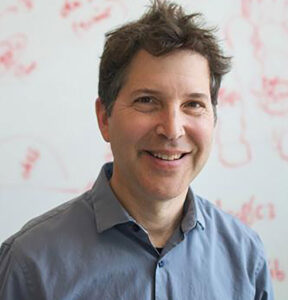Assembling an end-of-the-year review is always tricky, especially for biotechnology, a field in which creative energy keeps finding new outlets—and yet somehow multiplies rather than dissipates. A comprehensive review would be exhausting, unless it were to do no more than list significant advances, in which case it would be superficial. A selective review would be more manageable, but it would also risk being arbitrary.
One way to navigate between the extremes of comprehensiveness and selectiveness is to be representative. This is the course that GEN’s top editors have chosen for this end-of-year review. They have decided to comment, at fair length, on a handful of outstanding presentations from GEN’s State of Biotech 2023, a virtual event that brought together a host of luminaries from industry and academia.
Kevin Davies, PhD, the executive editor of The CRISPR Journal and GEN Biotechnology, recalls the event’s opening keynote conversation, which featured Carolyn Bertozzi, PhD, professor of chemistry at Stanford University and a co-winner of the 2022 Nobel Prize in Chemistry.
Julianna LeMieux, PhD, deputy editor in chief of GEN, highlights the keynote presentation by David Baker, PhD, professor of biochemistry at the University of Washington, a Howard Hughes Medical Institute investigator, and the director of the Institute for Protein Design.
John Sterling, editor in chief of GEN, discusses a session that was devoted to the state of mRNA vaccines and therapeutics. The session’s speakers were Nathaniel Wang, PhD, co-founder and CEO of Replicate Bioscience, and Daniel G. Anderson, PhD, professor of chemical engineering at the Massachusetts Institute of Technology.
As informative as these presentations are, they offer less than comprehensive coverage of the biotechnology field. They may even fall a bit short of being representative. However, they do capture the spirit of an event that can be said to have been representative. This event, which originally aired last September, is still available on the GEN website.
Kevin Davies cites Nobel-winning glycobiology research

Stanford University’s Carolyn Bertozzi, PhD, shared the 2022 Nobel Prize in Chemistry “for the development of click chemistry and bioorthogonal chemistry.” She is one of the founding faculty of the interdisciplinary Sarafan ChEM-H Institute (Chemistry, Engineering, and Medicine for Human Health). She is also a co-founder and advisor to a dozen spin-out biotech companies, exploring new diagnostics therapies that tackle a variety of genetic diseases and cancers.
At the State of Biotech event, Bertozzi said that she was introduced to the field of glycobiology while in graduate school at UC Berkeley. Then she offered a few general observations: “Every cell type has a different sugar coating; the sugars are molecular information that interact with receptors on other cells. They’re involved in all facets of human biology, just as much as proteins or nucleic acids or other biopolymers. … [There is] a huge opportunity to improve human health by understanding carbohydrates better. Chemical tools turn out to be very empowering for this.”
She mentioned coining the term “biorthogonal.” “[It describes] chemical reactions that take place among different reactive groups that do not interact or interfere with anything in a biological system,” she said. “Today, inside a patient, the chemistries are so selective, clean, and harmless that you can literally do chemistry in a person the same way that, 20 years ago, chemistry would be done in a glass flask.”
Bertozzi also spoke about the controversial 2023 Inflation Reduction Act. “[The bill] targets small molecules in a different way than biologics. For small molecules, they’ve basically shortened the period of exclusivity during which a company can benefit from revenue from their drug before generic competition comes in.” This could entail that pharma companies will “forget about small indications that aren’t going to be very lucrative and go right into big lucrative indications, which means that a lot of medical need will go unmet and that the drug won’t get tested in smaller indications.”
One year after winning the Nobel, Bertozzi is still adjusting to autograph hunters and strangers in airports asking her to pose for selfies. “Being a small-time celebrity is a very new experience for most scientists!” she exclaimed. She added that she hopes the Nobel will allow her “to be a bit more bold in the science we do—to take some risks on things that have a longer horizon than typical projects.”
“I’m sure there’s more I can do as a Nobel laureate,” she declared, “and I’ll find out!”
Julianna LeMieux highlights progress in protein design

The second keynote presentation in the State of Biotech Summit was given by David Baker, PhD, a pioneer in methods to predict and design the three-dimensional structures of proteins. He has won multiple awards for this work on artificial intelligence–powered predictions of proteins, including the 2021 Breakthrough Prize.
Baker noted it’s an “exciting time” in protein design. He went so far as to say protein design is at a tipping point. More specifically, he offered several examples of how researchers had used the Rosetta software that he developed, with colleagues, to allow the design of proteins whose sequences are predicted to fold to the design structure, giving a snapshot of where deep learning–based protein design is at the moment. In addition, he spoke about the design of protein binding using the traditional physically based approach. And then, toward the end of his talk, he illustrated how his team can design binding using deep learning.
Baker started with medical applications and the first de novo designed medicine in use in humans—the protein-based vaccine for COVID-19 that uses a self-assembling nanoparticle technology developed by Neil King, PhD, assistant professor at the Institute for Protein Design. It’s a self-assembling nanoparticle with the spike protein receptor-binding domain on it. In addition, there are several other medicines that are now in human clinical trials. Baker added that he hopes to see more of those in the clinic soon.
But the Baker lab’s interests extend beyond medicine. For example, the lab is building molecular switches, vehicles for the targeted intracellular delivery of biologics, and sensors for an “artificial nose.” Other applications of protein design beyond medicine are in agriculture and environmental remediation. Baker noted that the lab is working on the harvesting of light energy (via engineered photosynthetic systems), the degradation of plastic and toxic compounds in the environment, and carbon capture.
This work has the potential to not only touch, but also transform, many (or even all) areas of biology. Baker emphasized that his lab is “committed to making the world a better place in these really important areas.” The lab is also working on technologies that combine biology and electronics. Potential applications include devices that better detect what’s going on in the world around us.
It may sound as though Baker raced through a dizzying array of applications. But overall, what was most striking was Baker’s optimism. Baker’s presentation made it clear that he steers his work not by a biotechnologist’s version of dead reckoning, but by compelling landmarks—the applications that protein design will be capable of 5 or 10 years from now.
John Sterling discusses mRNA technology

The pandemic response unleashed the power of mRNA technology. Besides enabling the development of mRNA-based COVID-19 vaccines, this technology opened the door to an entirely new range of therapeutic options for other diseases. Seventy years of biological work on mRNA have been validated, and applications of this work are far from exhausted.
During the State of Biotech session on mRNA therapeutics and vaccines, Replicate Bioscience’s Nathaniel Wang talked about the surprises he encountered during drug delivery research. For example, when he and his team first began looking at different vectors, they thought they were going to find some that were specialized for the expression of therapeutic proteins and others that would be specialized for use in vaccines.
What the scientists actually found, he said, was that the performance of vectors was dependent on the particular protein they were expressing. Some proteins need to be secreted into the blood to have their effect, others have to be decorated with sugars, while still others must be chopped into fragments and shown to the immune system. All these vectors influence the ways that proteins are processed by cells.
Wang pointed out that every protein needs something different to induce its effect. “We ultimately found that there was going to be something unique to every vector and protein combination,” he added. So, in the end, mRNA is not a plug-and-play technology. What’s critically important is that you need a diversity of vectors within your library that you can scan through to find the right vector for each individual protein that you want to express.

Mass. Institute of Technology
MIT’s Daniel G. Anderson said that when he began looking at small interfering RNA delivery to the liver, a key goal was determining how many different nanoparticles worked in animals. “We had thought that this might be like small-molecule drug discovery, where we needed to make a 50,000-compound library to find something that would bind and have the desired effect,” Anderson explained. “Unexpectedly, we were able to able to identify several nanoparticles that could deliver RNA in vivo after evaluating only several hundred.”
When his lab moved on to nonhuman primates, it developed three different chemistries that were all able to deliver RNA in vivo. “I was surprised by how quickly we were able to generate a diverse set of nanoparticles that could deliver RNA in vivo,” he recalled. “I believe that our early research gave the field hope that RNA nanoformulations could translate into therapeutic products.”
Anderson pointed out that the visibility of the mRNA field continues to be elevated: “The success of mRNA vaccines has encouraged people to think outside the space of vaccines and dream about a future where nanoparticles can be used for many other things, including genome editing the DNA to generate permanent therapies.”



